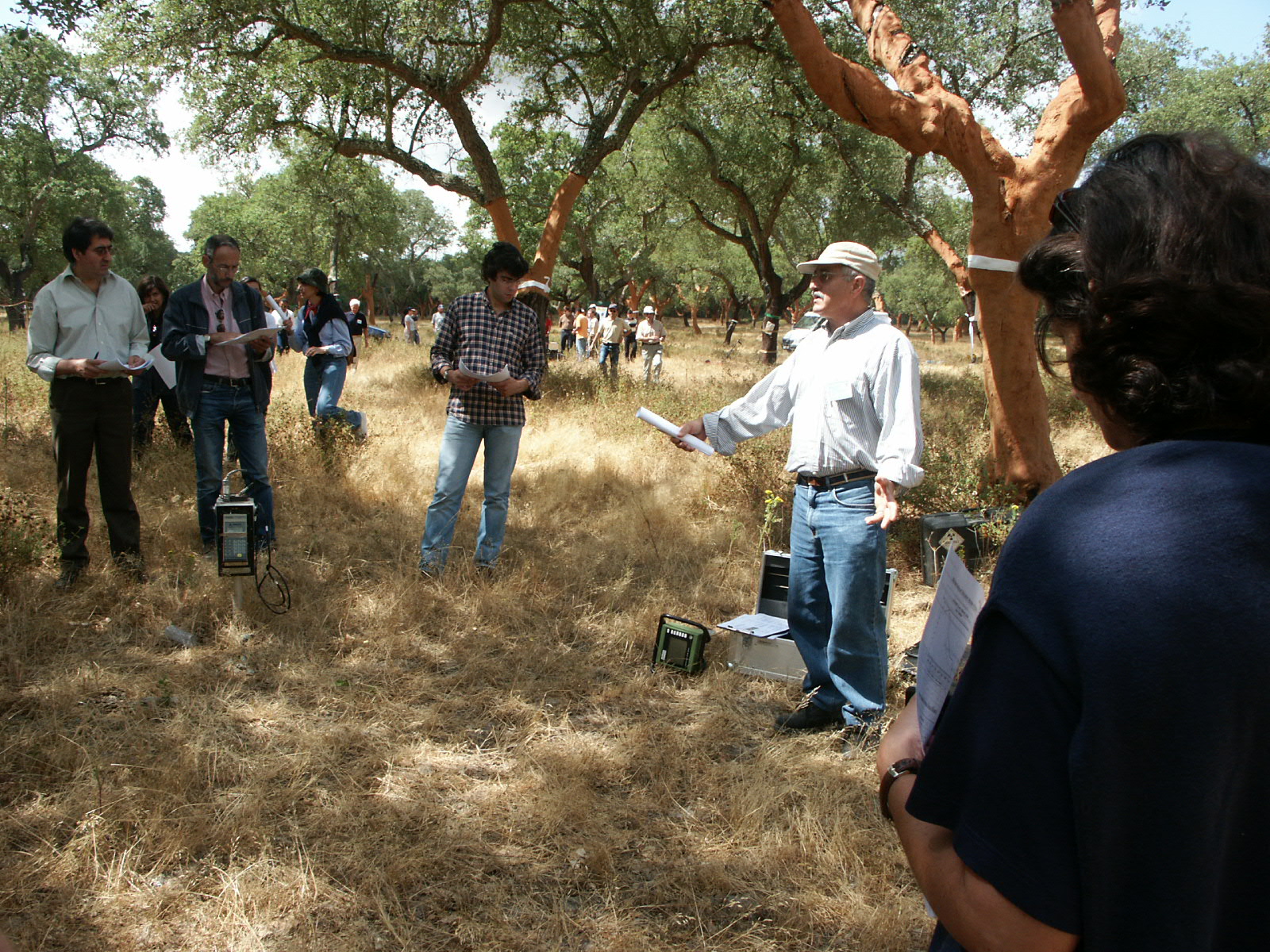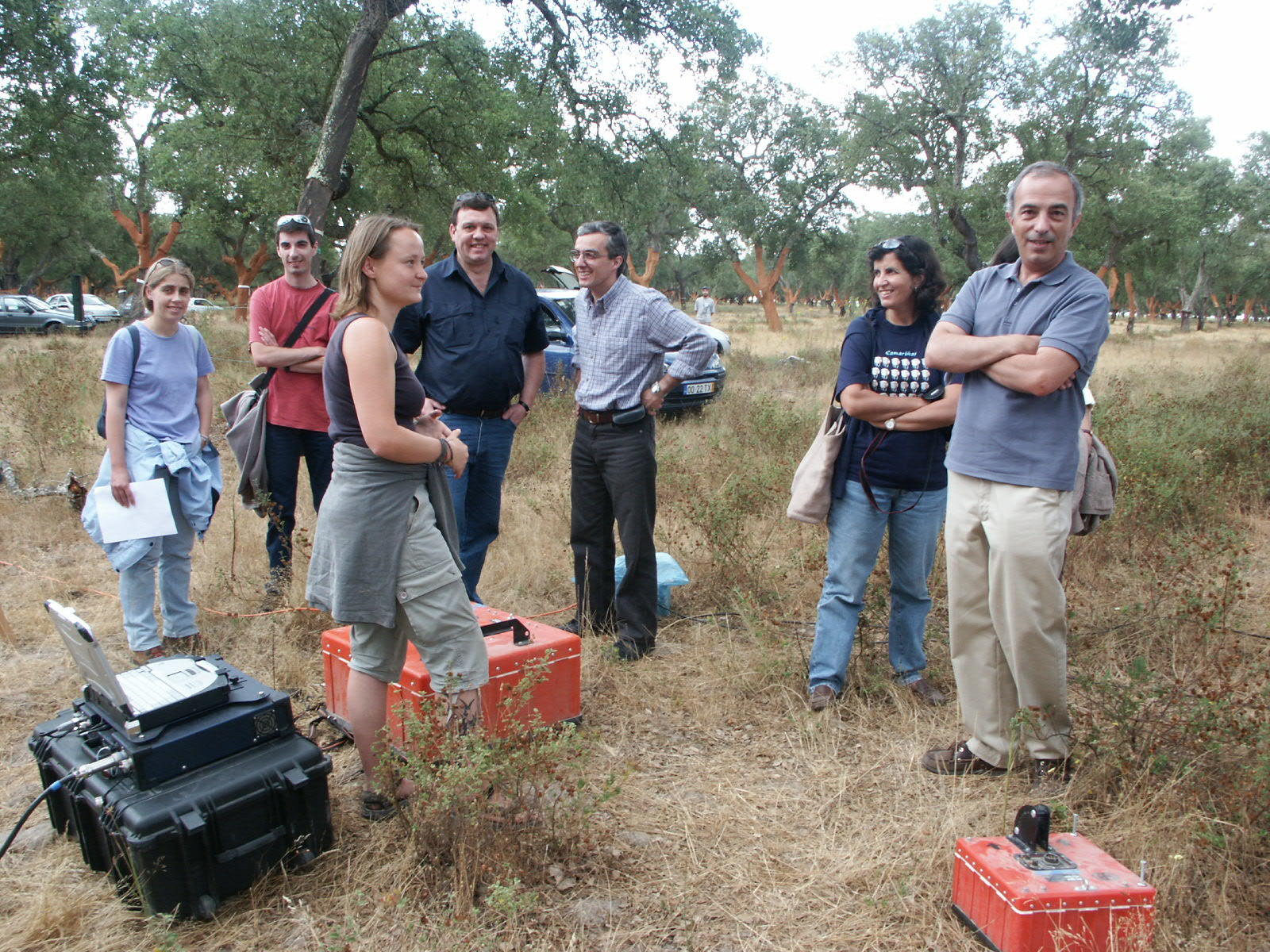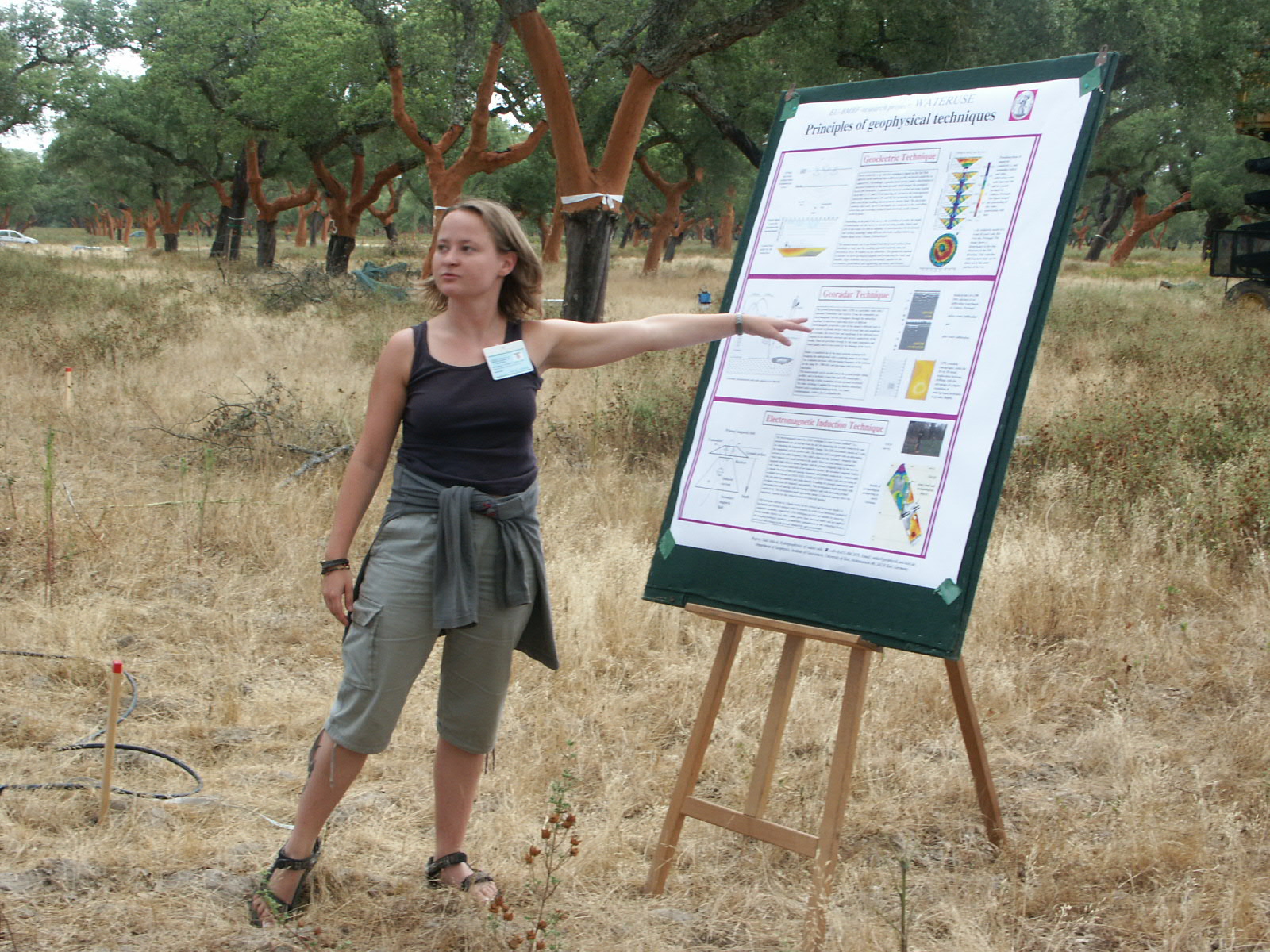Open Day
1st July
2003
Rio Frio, Portugal
PROGRAMME in Portuguese
With the aim of disseminating the
WATERUSE
project activities to the technical, scientific and student
communities, an Open Day has
been organised during the IOP2 - Intensive
Observation Period 2 (1st July 2003).
During the
Open Day it has been
possible to observe the different tasks developed by the several teams
present
in the IOP2 as well as to present and discuss
techniques and knowledge.
Participating entities:
Instituto Superior de Agronomia,
Universidade Técnica de Lisboa
(Portugal)
Instituto de
Desenvolvimento Rural e Hidráulica (Portugal)
Centro Operativo de Tecnologia de Regadio
(Portugal)
University of Dundee
(Scotland, United Kingdom)
Mendel’s University of
Agriculture and Forestry – Brno (Czech Republic)
Christian-Albrechts-Universitaet zu Kiel (Germany)
Università degli studi di Padova
(Itália) + Basel University (Switzerland)
GeoHires International Ltd (Germany)
Università
di Napoli Federico II (Italy)
Main
issues and poles to visit
Pole 1
Introduction to WATERUSE project
(ISA)
Pole 2
Meteorological measurements (ISA)
Observation of the
sensors network that ensures the meteorological data
collection.
Pole 3
Soil - Water content, profile
and root distribution (ISA and Univ. Kiel)
Observation of several
sensors for the evaluation of water content – neutron
probe, capacitive probe, etc, as well as innovative methods with
potential to
assess root structure and differences in the texture of soil profiles
and in
water content, with images production (3-D maps), by using geoelectric
techniques and GPR (Ground Penetrating Radar).



Pole
4
Micrometeorological
observations (Univ. Padova and ISA)
Use of advanced
techniques that study the turbulent movements above the canopy,
namely the eddy covariance technique, with the aim of quantifying ET
and
understanding the exchanges of mass and energy between the canopy and
the
atmosphere.
Observation of sensors:
sonic anemometers, high
resolution hygrometers, infrared gas analysers, etc.
The set included also
sensors to quantify
radiation and soil heat flux components, aiming to gather information
on the
surface energy balance.
Use of simple techniques
to measure leaf water
potential and stomatal conductance to evaluate plant water status and
delineate
an alternative in irrigation scheduling.
Stomatal aperture is
used in evapotranspiration
models and is a reference to analyse the behaviour of irrigation
scheduling
indicators.
Observation of sensors,
its use and some
results; discussion of applications.
Pole 6
Sap flow and stand
structure - canopy/roots (ISA and Mendel Univ.)
Total daily sap flow is equivalent to plant
transpiration. Three methods have been used to measure sap flow in
trunks and
roots.
Observation o
f sensors and presentation of
application examples in the assessment of stand transpiration. The flux dynamics translates
also a survival
strategy and the state of the conducting system, indicating possible
dysfunctions and diseases, which can be interpreted in connection to
the
functional stability and vitality of trees and stands.
Techniques in use, to the characterization of
the stand structure, were referred.
Polo 7
Remote
sensing (Dundee Univ.)
Measurement of
vegetation temperature allows
for the estimate of its evaporation.
The use of remote sensing techniques with
this
purpose allows for the assessment of instantaneous results at different
scales.
Observation of sensors
use, based in the images
taken at different wavelengths, converted to canopy temperature
estimates.
The meteorological variables and the canopy
resistances are incorporated in evaporation models, along with the
measurements
given by the images.